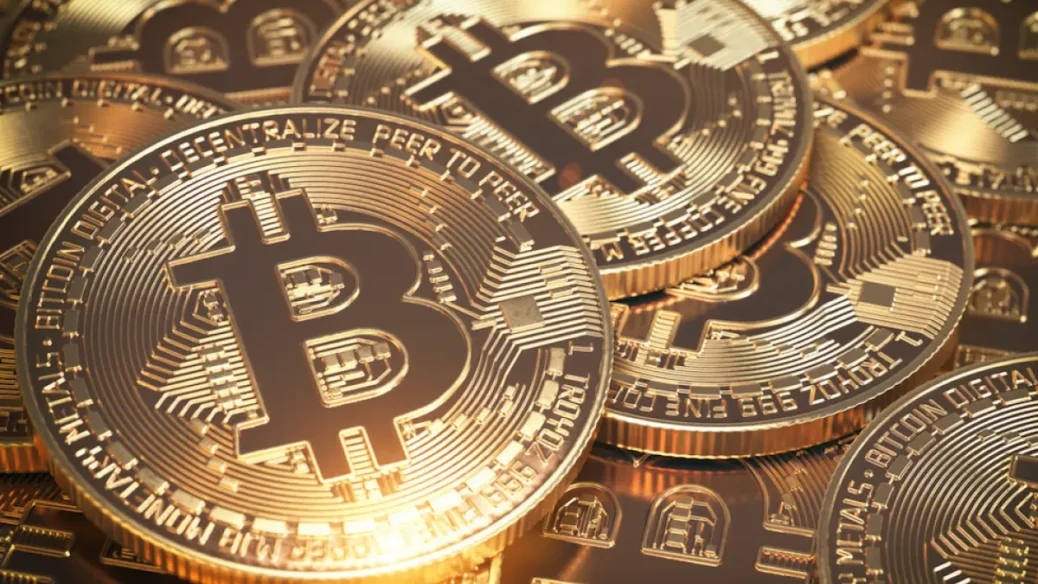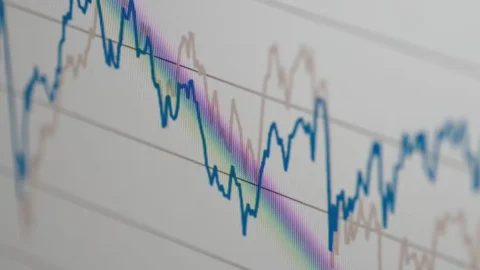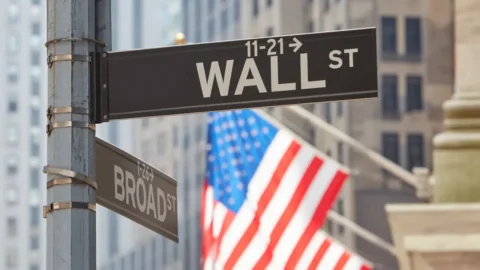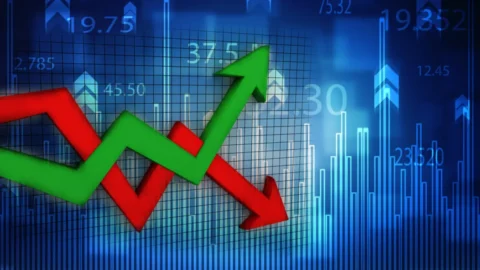Bitcoin Fever
A Guide To Help Your Understanding of Cryptocurrency
Bitcoin fever has reached a state of frenzy. It seems that everyone is talking about it, whether they are invested or not. There have been spectacular fortunes made in Bitcoin, yet very few people have any real idea exactly what all the fuss is about.
On Thursday, its ticker was given its own designated space on cable news as the price surged past $16,000, and then past $17,000 only few hours later. The price reached $19,000 before moving almost 20% lower. An investor who put $10,000 in Bitcoin at the beginning of the year would now have $180,000 and if they had done so in 2009 they would have $180 MILLION.
What Is Cryptocurrency?
Cryptocurrency is a form of digital money that is designed to be secure and anonymous. It is associated with the internet and uses a process known as cryptography which converts information into an uncrackable code. The origins of cryptography developed during the Second World War to facilitate secure communication. Bitcoin is a form of cryptocurrency.
What Is Bitcoin?
Bitcoin isn’t a hard coin, currency, or anything that you can put your hands on. It is the first cryptocurrency and was created by a programmer who is known by the pseudonym Satoshi Nakamoto, in 2008. While the initial intent was to develop a decentralized currency free from government controls, the initial attraction was to those wishing to circumvent legal payment venues. Drugs (and other services) could be purchased on the internet anonymously through Bitcoin on what is called the “Dark Web”. The government cracked down on one of the most notorious sites, called Silk Road, in 2013 and confiscated $48 million in Bitcoin.
How Does It Work?
Bitcoin is unique in that there are a finite number of them: 21 million. Bitcoin can be “created” from nothing by solving complex mathematical formulas – this process is called “mining”. The more people that try to “mine” Bitcoin, the more difficult the equation gets. Every four years, the number of Bitcoins released relative to the previous cycle gets cut in half. As a result, the number of Bitcoins in circulation will approach 21 million, but never hit it. This means Bitcoin never experiences inflation. Unlike US dollars, whose buying power the Fed can dilute by printing more greenbacks, there simply won’t be more Bitcoin available in the future.
Bitcoin was developed to be isolated from governments and central banks. It is organized through a network known as a blockchain, which is basically an online ledger that keeps a secure record of every transaction on every computer. Each time anyone buys or sells Bitcoin, the swap gets logged and every computer on the chain gets updated.
No one controls these blocks, because blockchains are decentralized across every computer. Theoretically, this makes it impossible to steal because EVERY computer would have to be updated for the transaction to be approved in the blockchain.
So Why Should I Care?
People have made a LOT of money in Bitcoin. Bitcoin has risen from $1 in 2009 to $18,000 at the time of this writing. It has risen more than 1,700% since the beginning of the year. Many early buyers of Bitcoin have become fantastically wealthy in recent months. Tyler and Cameron Winklevoss (of Facebook fame) said they purchased $11 million in Bitcoin in 2013 and their holdings are now reportedly worth more than $1 billion. The person known as Satoshi Nakamoto is reportedly worth over $6 billion.
How Can I Get Involved?
The easiest way to get involved in Bitcoin is to open an account with a crypto exchange. The leading crypto exchanges are Coinbase, Kraken, Bitfinex and Bitstamp. Essentially, you deposit money into the exchange and receive what is known as a “digital wallet”, so that you will be able to buy and sell on the exchange. These exchanges require a fair amount of personal information that they use in account verification, and some of them take a surprising amount of time and effort to set up before your account is approved and/or funded to transact. Once you are approved, you are ready to trade.
Why Has Bitcoin Gone Up So Much?
There are many reasons for the price movement. The underlying thesis is that the decentralized nature of cryptocurrency is going to become more mainstream over time, and the higher the level of acceptance, the higher the price because there is a finite number available. It is conceivable that the price of Bitcoin could be $50,000 to $100,0000 to $1,000,000 at some point depending upon the overall level of acceptance. The recent rise in price is simply supply and demand metrics. Very few people own Bitcoin, and a lot more want to own it.
Pro’s
- Banks and financial companies see tremendous value in blockchain technology that Bitcoin is based on.
- Financial exchanges are going to start trading Bitcoin on a regulated basis. The CBOE instituted a Bitcoin futures contract last night and the CME and other institutions will soon follow. This will tend to “legitimize” the concept and bring more widespread acceptance among investors. This will only help the demand side of the price equation.
- The concept has migrated from the initial users who were attracted to the anonymous nature to hide illicit activity to a more widespread universe where merchants and businesses are accepting it as payment.
Con’s
- Price Volatility is off the charts. The recent price of Bitcoin has fluctuated 10%-20% DAILY. This makes the timing of the purchase extremely difficult.
- While the actual Bitcoin is considered “unhackable” (more on that later), the same cannot be said for the individual accounts, service providers and exchanges – each of which has their own security protocols. There have been instances where exchanges have been compromised and Bitcoins have been “stolen”. This happened very recently where $60 million in Bitcoin was stolen from a cyber exchange and all deposits were “lost”. They won’t be recovered due to the “untraceable” aspect of the currency.
- Bitcoin can be lost. Since it is a digital currency and the account information resides on a hard drive, owners are subject to something happening to the drive. One buyer “accidentally” threw out his hard drive earlier this year containing the digital wallet sequence for his Bitcoin worth $4 million. If that isn’t bad enough, the value today would be almost $100 million!! If you decide to keep your Bitcoin in a cloud based version – see above.
- Competition from central banks. This is a longer-term risk, but it could be the most important for investors. If the cryptocurrency solution became mainstream enough, there could be a massive effect on potential revenue to central banks. It would not be inconceivable that countries would set up their own digital currency, as there are significant benefits to the technology. It would not be inconceivable to foresee a time when governments ban ownership of Bitcoin and other cryptocurrencies, perhaps even criminalize transacting with them, and shut down the exchanges. Never underestimate the power of a central bank to defend itself from attack.
- Last point. Bitcoin is based on a belief that blockchain technology is bulletproof. Experts agree it is impossible to corrupt. “Flying machines were impossible”, The Titanic was “unsinkable”, “a man can’t walk on the moon” …just saying.
At the End of The Day….
The concept of Bitcoin technology is fascinating. We have done a fair amount of research and have just scratched the surface on many of the issues at play. Most of the people that are involved in Bitcoin and other cryptocurrencies are doing so because they want to make money, and the price is going up. It’s hard to argue with success, but an old Wall Street maxim comes to mind – “Don’t confuse brains with a bull market”. Just because you made money does not mean it was a good investment.
Ultimately, our view is colored on the simple fact that there is NO UNDERLYING VALUE to Bitcoin or ANY cryptocurrency. The value resides in the price one is willing to pay for it and the trust all the holders have in the technology. Investment historians might recall a similar phenomenon known as the “Tulip Bulb Mania” in the early 1600’s in Holland. The tulip was brought to Europe in the middle of the sixteenth century and Holland’s upper classes soon competed for the rarest bulbs as tulips became a status symbol. Tulip bulbs were traded on the stock exchanges of numerous Dutch towns and cities. Many people traded or sold possessions, including properties, to participate in the tulip market mania. Like any bubble, it all ended in 1637, when prices fell and panic selling began. Bulbs were soon trading at a fraction of what they once had, leaving many people in financial ruin.
A more recent example would be seen in the internet “bubble” of 2000-2002. Companies that had “.com” added to their name instantly traded 50% higher and the entire technology sector traded at incredible valuations based on unattainable growth projections. Those who were invested in the sector recall the painful market performance and bankruptcies of many of these companies. Most people do not realize that Amazon traded down more than 90%. Most of the “dotcom” companies didn’t even perform that well but filed for bankruptcy instead.
Could this happen to Bitcoin? ABSOLUTELY. Could Bitcoin go to $100,000? ABSOLUTELY. The question that needs to be answered by someone thinking of an investment is whether they believe that Bitcoin is like Amazon, which had a real business with revenues and a defined growth plan, or like Pets.com, which was the poster child for a company that had nothing unique to offer other than the “.com” at the end of the name.
Notwithstanding our earlier assertion that there is no underlying value to the currency, our view is that blockchain will ultimately be more like Amazon than Pets.com. The blockchain technology is probably the future of digital finance and Bitcoin is the biggest beneficiary of that technology, but we think that we will see a day of reckoning before that happens. We have no idea if that day will be when the price is $10,000, $20,000 or $100,000 and there will be fortunes made before that occurs.
This is obviously a very complicated topic and if you wish to discuss further, please give us a call.
Need Some Help?
If you’d like some help from one of our CPAs or CERTIFIED FINANCIAL PLANNER (CFP®) advisors regarding this strategy and how it applies to you, the Rhame & Gorrell Wealth Management team is here to help.
Our experienced Wealth Managers facilitate our entire suite of services including financial planning, investment management, tax optimization, estate planning, and more to our valued clients.
Feel free to contact us at (832) 789-1100, [email protected], or click the button below to schedule your complimentary consultation today.
IMPORTANT DISCLOSURES:
Corporate benefits may change at any point in time. Be sure to consult with human resources and review Summary Plan Description(s) before implementing any strategy discussed herein.Rhame & Gorrell Wealth Management, LLC (“RGWM”) is an SEC registered investment adviser with its principal place of business in the State of Texas. Registration as an investment adviser is not an endorsement by securities regulators and does not imply that RGWM has attained a certain level of skill, training, or ability. This material has been prepared for informational purposes only, and is not intended to provide, and should not be relied on for, tax, legal or accounting advice. You should consult your own CPA or tax professional before engaging in any transaction. The effectiveness of any of the strategies described will depend on your individual situation and should not be construed as personalized investment advice. Past performance may not be indicative of future results and does not guarantee future positive returns.
For additional information about RGWM, including fees and services, send for our Firm Disclosure Brochures as set forth on Form ADV Part 2A and Part 3 by contacting the Firm directly. You can also access our Firm Brochures at www.adviserinfo.sec.gov. Please read the disclosure brochures carefully before you invest or send money.













